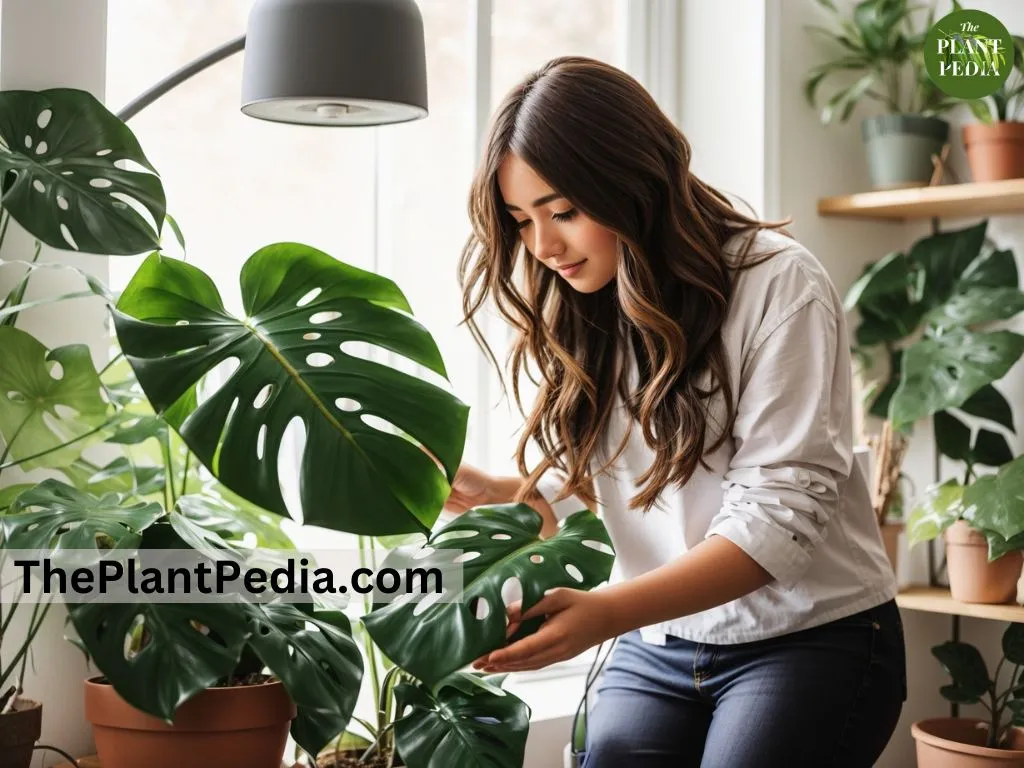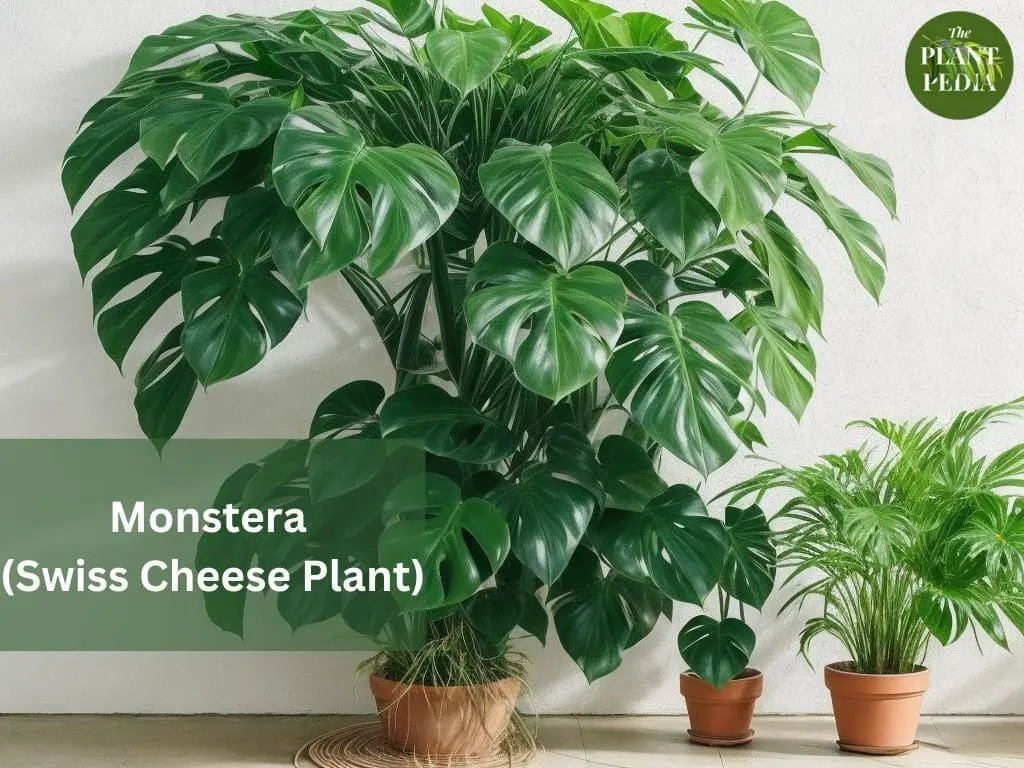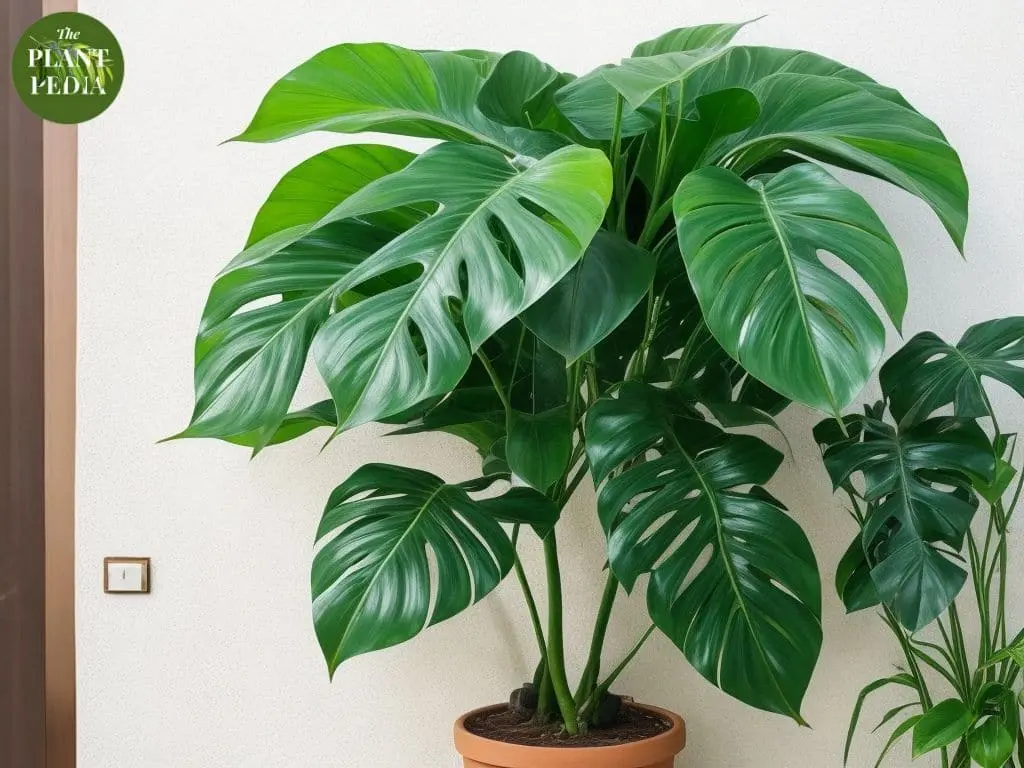The Monstera deliciosa, also known as the Swiss cheese plant, is a beloved houseplant known for its unique fenestrated leaves and adaptability to various environments.
Originating from the tropical rainforests of Central and South America, Monstera plants have become a popular choice among indoor gardeners due to their striking appearance and relatively low maintenance requirements.
In this comprehensive guide, we will delve deep into every aspect of Monstera plant care, from understanding its natural habitat to providing optimal growing conditions, and addressing common issues that may arise.
By the end of this article, you will have the knowledge and confidence to cultivate a thriving Monstera in your own home.
Table of Contents
Understanding the Monstera Plant
Natural Habitat
Monstera plants are native to the tropical rainforests of Central and South America. They thrive in warm, humid environments with dappled sunlight filtering through the canopy.
Understanding this natural habitat provides crucial insights into replicating optimal conditions for your indoor Monstera.
Read: Are Monstera Toxic to Cats & Dogs?
Growth Patterns
Monstera plants are characterized by their vining or climbing growth habit. In their natural habitat, they attach themselves to trees and other structures using aerial roots.
Understanding these growth patterns will help you provide the right support and conditions for your plant to flourish.
Varieties of Monstera
While the Monstera deliciosa is the most commonly known variety, there are several other species and cultivars, each with its own unique characteristics.
Some popular varieties include Monstera adansonii (Swiss cheese vine), Monstera obliqua (also known as the “Swiss cheese plant,” but with smaller leaves), and Monstera siltepecana (often called the “silver monstera” due to its distinctive silver markings).

Choosing the Right Pot and Soil
Pot Selection
Selecting the right pot is crucial for your Monstera’s well-being. Ensure it has adequate drainage holes to prevent waterlogging, which can lead to root rot.
Additionally, choose a pot that provides ample room for the plant’s roots to grow, allowing for future expansion.
Soil Requirements
Monstera plants thrive in well-draining, aerated soil. A mix of peat moss, perlite, and orchid bark is often recommended.
This combination provides the right balance of moisture retention and aeration for healthy root development.
Read: 10 Best Soil for Monstera Plants: Which Type is the Best?
Repotting
As your Monstera grows, it will eventually outgrow its pot. Repotting should be done every 1-2 years or when you notice the roots becoming root-bound.
This allows the plant to access fresh nutrients and provides more room for growth.
Read in Depth: Repotting Monstera Plant: A Step-by-Step Detailed Guide.
Lighting Requirements
Natural Light vs. Artificial Light
Monstera plants are adaptable when it comes to lighting, but they do have preferences. They thrive in bright, indirect light, which replicates their natural habitat.
While they can tolerate lower light conditions, they may grow more slowly and produce fewer fenestrations.
If natural light is limited, supplement with artificial grow lights. LED grow lights with a spectrum of 5000K to 6500K are ideal for promoting healthy growth.
Finding the Ideal Location
Choose a location with filtered sunlight, such as near a north or east-facing window. Avoid placing your Monstera in direct sunlight for extended periods, as this can scorch the leaves.
If your plant shows signs of reaching towards the light source, it may be an indication that it needs to be moved to a brighter spot.
Read in Depth: Monstera Light Needs: Maximize Your Plant Growth.

Watering and Humidity
Watering Frequency
Consistent watering is key to Monstera plant care. Allow the top inch or so of soil to dry out before watering. When you do water, ensure it drains freely from the bottom of the pot.
Overwatering can lead to root rot, while underwatering can cause stress to the plant.
Humidity Levels
Monstera plants thrive in high humidity environments, which can be a challenge for some indoor spaces.
You can increase humidity by misting the leaves, using a humidifier, or placing a tray of water near the plant. However, they can tolerate average household humidity levels.
Avoiding Common Watering Mistakes
Always use room temperature water, as extreme temperatures can shock the roots. Additionally, avoid letting your Monstera sit in water for prolonged periods, as this can lead to root rot.
Temperature Tolerance
Temperature Range
Monstera plants prefer temperatures between 65°F to 80°F (18°C to 27°C). They can tolerate slightly cooler temperatures, but it’s crucial to keep them away from drafts or sudden temperature fluctuations.
Seasonal Adjustments
During the growing season (spring and summer), your Monstera may benefit from a slight increase in humidity.
In the winter, reduce watering frequency and consider moving it to a slightly cooler location to mimic its natural dormant period.

Fertilizing Your Monstera
Choosing the Right Fertilizer
Fertilizing is essential for providing your Monstera with the necessary nutrients for growth. Opt for a balanced, water-soluble fertilizer with a ratio of 20-20-20 or 10-10-10.
During the growing season (spring and summer), feed your plant every 4-6 weeks. Reduce fertilization during the dormant period (fall and winter) to every 8-10 weeks.
Application Frequency
It’s better to err on the side of under-fertilization rather than over-fertilization, as excess nutrients can harm the plant.
Always follow the recommended dosage on the fertilizer label, and remember that less is often more when it comes to fertilizing.
Signs of Over-fertilization
Watch out for signs of over-fertilization, such as brown leaf edges, leaf burn, or salt deposits on the soil’s surface.
If you notice these symptoms, flush the soil with water to remove excess salts and adjust your fertilization routine accordingly.
Training and Pruning
Staking and Supporting
As your Monstera grows, you may need to provide support to prevent it from becoming unruly. Use stakes or trellises to guide the plant’s growth and create a visually appealing shape.
This also helps prevent the plant from toppling over due to its weight.
Pruning for Health and Aesthetics
Regular pruning is essential for maintaining the health and appearance of your Monstera. Trim leggy growth, yellowing leaves, or any damaged parts of the plant.
Pruning encourages bushier growth and redirects the plant’s energy towards healthy foliage.
Managing Aerial Roots
Monstera plants produce aerial roots, which are natural and play a role in supporting the plant in its natural environment.
You can choose to leave them be or guide them into the soil to promote additional stability.

Common Pests and Diseases
Identifying Common Pests
Keep an eye out for common pests like spider mites, mealybugs, and aphids. These pests can damage your Monstera’s leaves and weaken the plant.
If you spot any signs of infestation, treat your plant promptly with natural remedies or insecticidal soap.
Natural Pest Control Methods
Rather than resorting to harsh chemicals, consider natural pest control methods such as neem oil or introducing beneficial insects like ladybugs to your indoor garden.
Recognizing and Treating Diseases
Monstera plants can be susceptible to fungal diseases like root rot and bacterial infections.
Address these issues promptly by adjusting your watering routine, improving air circulation, and if necessary, using fungicides or bactericides.
Propagation Techniques
Propagating from Cuttings
One of the joys of owning a Monstera is propagating new plants from cuttings. You can propagate your Monstera by taking stem cuttings with at least one node and allowing them to root in water or directly in soil.
Air Layering
Air layering is another propagation method where you encourage roots to develop on a part of the plant while it’s still attached to the main plant.
This allows you to create a new plant without removing it from the parent plant.
Seed Propagation (if applicable)
While Monstera plants are typically propagated from cuttings or air layering, some enthusiasts may choose to try seed propagation, although it’s less common and can be more challenging.
Troubleshooting Common Issues
Yellowing Leaves
Yellowing leaves can indicate a range of issues, including overwatering, underwatering, nutrient deficiencies, or pests. Investigate the specific circumstances and adjust your care routine accordingly.
Leaf Curling
Leaf curling can be a response to dry air, underwatering, or direct sunlight. Ensure your Monstera has adequate humidity and is receiving appropriate lighting and watering.
Root Rot
Root rot is a common issue caused by overwatering and poorly draining soil. To address it, carefully remove the affected areas, improve drainage, and adjust your watering habits.
Additional Tips and Tricks
Before we wrap up, here are some additional tips and tricks to help you excel in Monstera plant care:
- Rotate Your Plant: Regularly rotating your Monstera allows for even growth and prevents it from leaning towards one side due to uneven light exposure.
- Monitor for Pests: Keep a close eye on your plant for any signs of pests. Early detection and treatment are crucial for preventing infestations from spreading.
- Maintain a Clean Environment: Regularly clean the leaves with a damp cloth to remove dust and improve the plant’s ability to absorb light.
- Observe Growth Patterns: Pay attention to how your Monstera is growing. If it’s producing fewer fenestrations or growing slowly, it may need adjustments in lighting or feeding.
- Provide Adequate Support: As your Monstera grows, make sure to adjust the support structure to prevent any damage to the plant.
- Avoid Drastic Changes: Monstera plants can be sensitive to sudden changes in their environment. Gradually acclimate them to new conditions, such as moving them to a different location.
- Consider Using a Moss Pole: Moss poles can provide excellent support for climbing Monstera plants. They also help to create a more natural environment for the plant.
- Share Knowledge: If you find success in caring for your Monstera, consider sharing your knowledge and cuttings with fellow plant enthusiasts. It’s a wonderful way to foster a sense of community and spread the joy of plant care.
Related FAQs:
How often should I water my Monstera plant?
Water your Monstera when the top inch of soil feels dry. This typically translates to once every 1-2 weeks, but it can vary depending on factors like humidity levels and pot size.
Can I keep my Monstera in direct sunlight?
While Monstera plants can tolerate some direct sunlight, it’s best to provide them with bright, indirect light. Too much direct sunlight can lead to leaf burn.
What type of fertilizer should I use for my Monstera?
A balanced, water-soluble fertilizer with a ratio of 20-20-20 or 10-10-10 is suitable for Monstera plants. Fertilize every 4-6 weeks during the growing season.
How do I propagate my Monstera?
You can propagate a Monstera through stem cuttings or air layering. Take a cutting with at least one node and allow it to root in water or soil. For air layering, encourage roots to develop on a part of the plant while it’s still attached to the main plant.
Why are the leaves of my Monstera turning yellow?
Yellowing leaves can be a sign of overwatering, underwatering, nutrient deficiencies, or pests. Evaluate the specific conditions and adjust your care routine accordingly.
What should I do if I notice pests on my Monstera?
If you spot pests like spider mites, mealybugs, or aphids, treat your Monstera with natural remedies or insecticidal soap. Introducing beneficial insects like ladybugs can also help control the pest population.
How often should I repot my Monstera?
Repot your Monstera every 1-2 years or when you notice the roots becoming root-bound. This allows the plant to access fresh nutrients and provides more room for growth.
Can I trim or prune my Monstera if it’s getting too large?
Yes, you can trim or prune your Monstera to control its size and shape. Remove leggy growth, yellowing leaves, or any damaged parts of the plant to encourage healthy growth.
Is it possible to grow a Monstera from seeds?
While it’s possible to grow a Monstera from seeds, it’s less common and can be more challenging compared to propagating from cuttings or air layering.
How can I increase humidity for my Monstera plant?
You can increase humidity by misting the leaves regularly, using a humidifier, placing a tray of water near the plant, or grouping plants together to create a microclimate of higher humidity.
Conclusion
Caring for a Monstera plant can be a rewarding experience, as these beautiful and unique houseplants are known for their resilience and striking appearance.
By understanding their natural habitat, providing the right pot and soil, ensuring proper lighting, and addressing common issues, you can cultivate a thriving Monstera in your home.
Remember that every Monstera is unique, and it may take some time and experimentation to find the perfect care routine for your specific plant.
Be patient, observe your plant’s behavior, and adjust your care accordingly. With dedication and a little green thumb know-how, your Monstera will flourish and become a stunning centerpiece in your indoor garden.
Happy growing!


